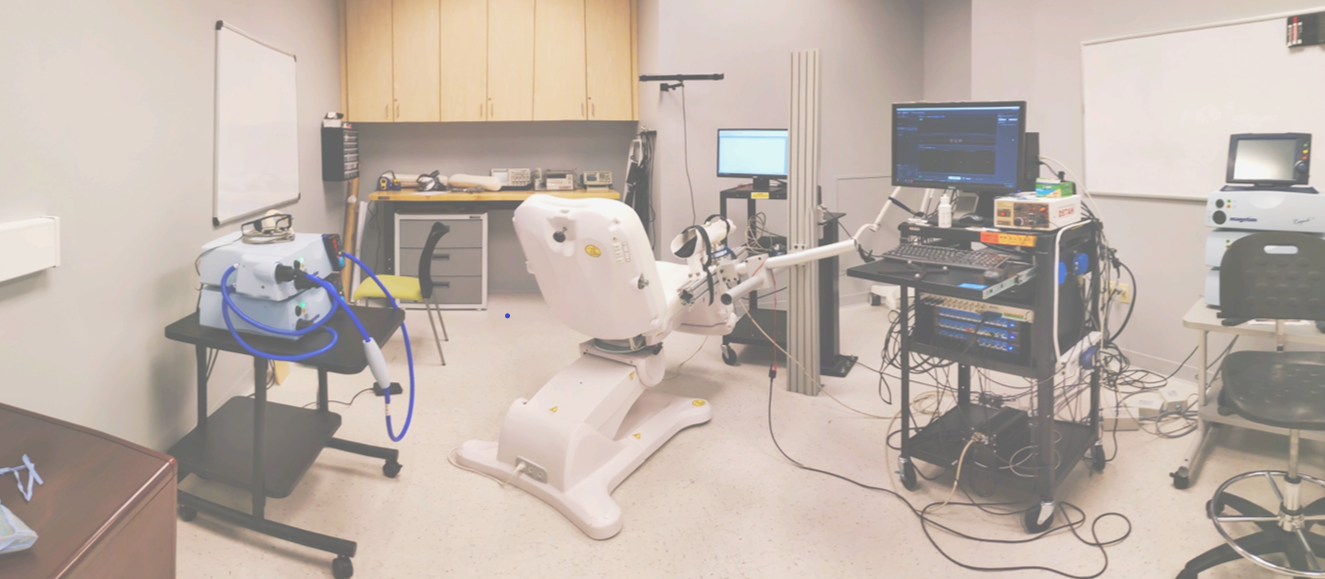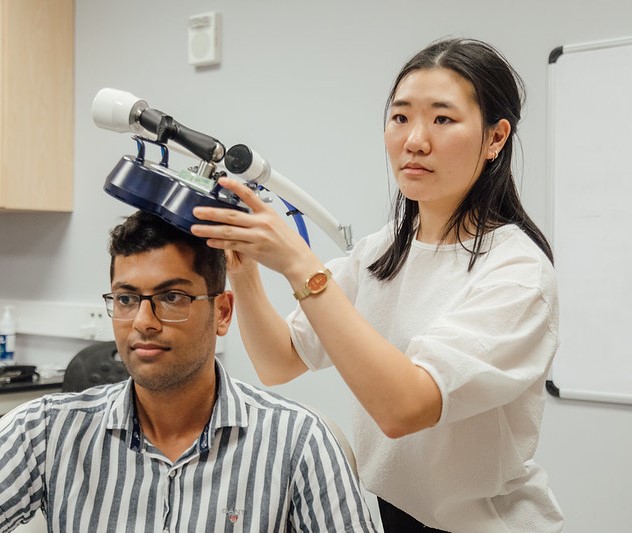
Lab Location
Our lab is located within the Bio+Tech Park in Richmond, Virginia. We are located on the fourth floor of the Bio+Tech Eight Building in Rooms 428 and 429. This is an ideal location since we are within one mile of the main campus of the VCU Health System, and also near to the College of Engineering Monroe Park campus. Approximately 640 square-feet of our laboratory space is devoted to experimental research and is fully accessible to individuals with disability, while 350 square-feet is distinctly reserved for computation, including data analysis, manuscript preparation, and musculoskeletal modeling and simulation of human movement.
The laboratory space is equipped with non-invasive neural stimulation devices, electrophysiological recording devices, force sensors, a multi-joint dynamometer, and data acquisition equipment and software.
Summary of Lab Equipment
The Magstim Bistim2 is a transcranial magnetic stimulation (TMS) unit that allows us to stimulate the brain non-invasively using single or dual pulse TMS. We have different coils that allow us to stimulate neurons in the motor cortical areas at different depths and focality to target neural pathways leading to upper or lower limb muscles.
The Magstim Super Rapid2 Plus is a TMS unit that is capable of high-frequency repetitive stimulation, such as intermittent theta burst stimulation (iTBS). Repetitive TMS can be used as a therapeutic approach to modulate neural activity.
The Delsys Trigno wireless EMG system allows us to measure muscle activity, including the muscle response to cortical and peripheral stimulation.
The Digitimer DS7AH is a constant current stimulator used to stimulate peripheral nerve or muscles through surface electrodes.
The CED micro 1401 is a data acquisition unit that records and outputs both analog and digital signals. This unit allows us to record data from multiple devices at once and accurately control the timing of different neuro-stimulation modalities.
Force Sensors – The lab has two JR3 force sensors with varying ranges of measurement. This is needed since the forces generated by nonimpaired individuals can be much greater than those generated by individuals with disabilities. Having the ability to capture a wide range of forces ensures we are collecting data at a high resolution.
The ANT Neuro eego mylab is an EEG system that allows us to measure electrical activity in the brain.

.jpg)
The Biodex multi-joint system allows us to test joint function, quantify joint strength, and develop controlled, training paradigms.
Summary of Software
We have multiple desktop workstations with Spike 2, Matlab, SolidWorks, and other engineering and data analysis software. For musculoskeletal modeling and simulation analyses, we have licenses for SIMM, Dynamics Pipeline, and SD/Fast.